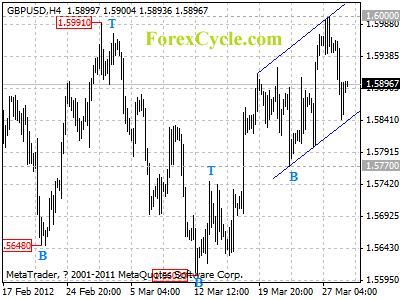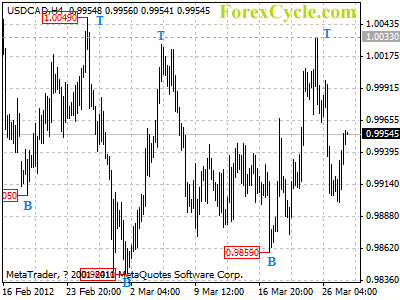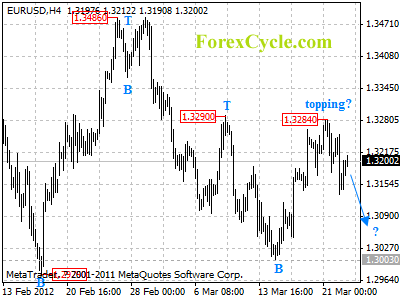It can be a lonely life as a contrarian value investor. By definition, you constantly find yourself in the minority. And by betting against the herd, you are subtly (or not so subtly) sending the message that you are smarter than everyone else.
This is not the sort of thing that makes your popular at a cocktail party. When you are right, your acquaintances are by definition wrong and you look like an insufferable know-it-all. And when you’re wrong? Don’t expect any sympathy.
Still, taking a contrarian mindset and, in the words of the great Warren Buffett, being greedy when others are fearful, is the only way to score outsized returns over time. To paraphrase another great investor, the late Sir John Templeton, you can’t outperform the market if you buy the market.
Of course, once in a while, the herd is actually right, and a cheap stock continues to get cheaper until the bitter end.
So, which is the case with Research in Motion (Nasdaq:$RIMM)? Is the former tech darling the contrarian buy of the decade? Or is it a value trap, luring hapless investors with its siren song of cheap earnings multiples?
RIMM released its quarterly earnings yesterday after the market closed, and the news was mixed. The number of subscribers rose to 77 million, and RIMM’s cash balance continues to rise, up by $610 million to $2.1 billion. Yet revenue fell 19% for the quarter to $4.2 billion, and the company posted a net loss of $125 million. Adjusting for good-will impairment and other one-time charges, the company saw earnings-per-share of 80 cents a share, a penny shy of analyst expectations.
Investors have gotten used to disappointing earnings announcements from RIMM, so none of this should come as a shock. But this is where it gets interesting. RIMM finally appears to be taking its problems seriously, and major management changes are in the works. Jim Balsillie, former co-CEO and the man perhaps most blamed for the company’s recent turn of fortune, is resigning from board. He will certainly not be missed by RIMM’s beleaguered shareholders.
Additionally, two other high-level executives, chief technology officer David Yach and chief operating officer for global operations Jim Rowan, will be leaving the company. CEO Thorsten Heins is cleaning house; it’s a shame it wasn’t done sooner.
Surprisingly little was said about BlackBerry Mobile Fusion, which I continue to believe is the company’s best (and perhaps only) chance at staying relevant over the long haul (see prior article for a longer discussion of Mobile Fusion). However, Heins did make it very clear in the post-announcement conference call that the company would be looking to refocus on its strengths in the enterprise market and look to new partnerships to address its weaknesses.
Some analysts took this to mean that the company is looking to eventually exit the handset business and focus instead on its core services business. I, for one, would encourage such a move. IBM (NYSE: $IBM) made the painful decision to largely exit the hardware business a generation ago, and it certainly proved to be the right one.
Heins also refused to rule out an outright sale of the company, and given the RIMM’s price I view a sale as a real possibility and a potential floor on the stock price.
RIMM is one of the cheapest companies in the world. It trades for 5 times forward earnings (which are, admittedly a bit of a moving target) and just 0.36 times sales. Value investors should take note that RIMM trades for substantially less than book value. At just 0.69 times book, RIMM could be sold off for spare parts and be worth more than its current market price.
Research in Motion | Key Statistics |
| Price / Earnings | 5.01 |
| Price / Sales | 0.36 |
| Price / Book | 0.69 |
| Price / Cash | 3.34 |
A large chunk of RIMM’s book value is its cash in the bank. RIMM has more than $4 per share in cash and investments. At its current price of $13.40, that amounts to nearly 30% of the value of the company.
RIMM’s portfolio of technology patents—which have real value and can be sold—are estimated to be worth anywhere from $2 to $7 billion. To be conservative, we’ll assume they are worth no more than $2 billion. At that value, $4 billion of RIMM’s $7 billion market cap is in cash and patents. That means that everything else—the property, plant and equipment, the inventory, the receivables and the going-concern value of the business—is being valued at just $3 billion, or $5.72 per share.
For a company that still has 77 million subscribers, a dominant position in the enterprise market, and over a billion dollars per quarter in cash flow from operations, that is crazy cheap.
I continue to recommend RIMM as a contrarian buy. At current prices, it is simply too cheap for me to ignore.
A word of caution is warranted, however. You have to have thick skin to own this stock. Take a look at some of the banter in the Tweetosphere, and you’ll see what I mean: RIMM StockTwits feed.
You also have to have faith that management won’t erode the value of the company’s assets before RIMM either turns it around or sells out to a larger buyer. Given the company’s recent track record, there are no promises on that count.
Still, you’re not going to score quick triple-digit gains by buying what everyone else is buying. And at current prices, I believe that RIMM presents a fantastic opportunity for returns of 100-200% over the next year.
Disclosures: RIMM is a current recommendation of the Sizemore Investment Letter

 Tradervox (Dublin) – The Euro has been on a bearish run against major currencies this week due to the eurozone finance ministers meeting today which is expected to endorse a plan to combine the European Stability Mechanism kitty with that of European Financial Stability Facility. This will be done in a bid to strengthen the region’s financial firewall safeguarding the region’s economy against any crisis like the one for Greece. The idea of combining these two facilities had been vehemently contested by Germany and Ireland; however, these two countries have softened their stand and now they are willing to comprise in order to secure the currency bloc.
Tradervox (Dublin) – The Euro has been on a bearish run against major currencies this week due to the eurozone finance ministers meeting today which is expected to endorse a plan to combine the European Stability Mechanism kitty with that of European Financial Stability Facility. This will be done in a bid to strengthen the region’s financial firewall safeguarding the region’s economy against any crisis like the one for Greece. The idea of combining these two facilities had been vehemently contested by Germany and Ireland; however, these two countries have softened their stand and now they are willing to comprise in order to secure the currency bloc.




